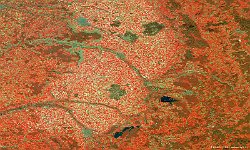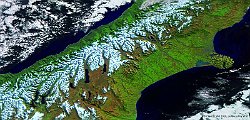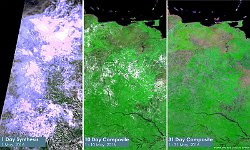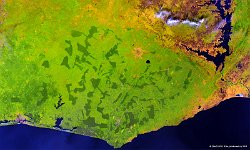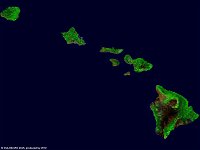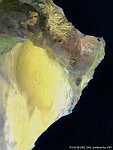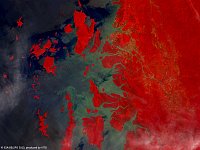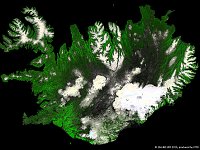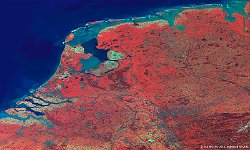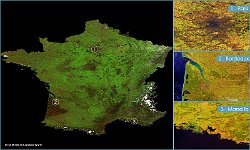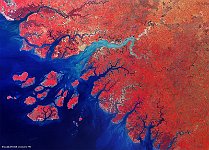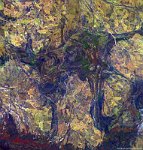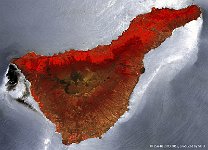36 / 72
Ghana, Biodiversity
Ghana is a West-African country located along the Gulf of Guinea with an area of 238,000 km² and about 27 million inhabitants. The country’s tropical climate is strongly influenced by the Intertropical Convergence Zone, a belt with thunderstorms migrating between northern and southern Ghana throughout the year. The northern part of Ghana receives ~800 mm of annual rain, while the southern part is substantially wetter with 1500 – 2000 mm. Due to these large differences in precipitation amount, Ghana’s landscape changes from mangrove, evergreen, and tropical forests in the south to savanna grasslands in the north.
The 300 m false-colour image of 13 January 2015 shows Ghana’s southern part, with various forest areas shown as dark green patches. To the right, Lake Volta and the White Volta River are visible, with Ghana’s capital Accra located south of Lake Volta. The lower-left part of the image shows the southern Ivory Coast, with economic capital Abidjan shown in purple.
Date: 13/01/2015
Resolution: 300m


